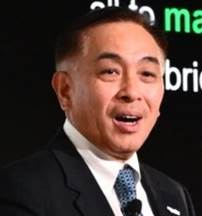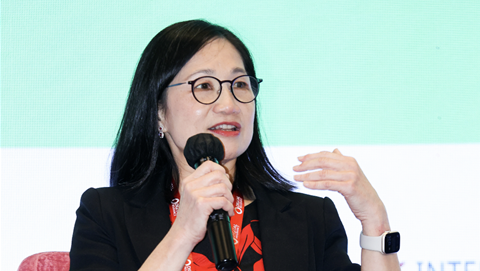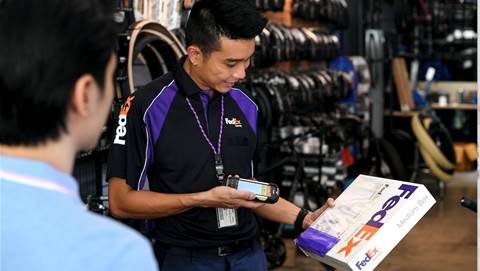The demand for power by the tech industry is going up year-on-year, fueled by the continued increase in data, computing, and connectivity from digitalisation, cloud, and the scaling of new technologies.
The power sector is also rapidly becoming a protagonist in the AI story. AI requires more power consumption with each future generation of AI acceleration. GenAI today uses 33 times more energy than a computer running a software task and generating a single AI image can take as much energy as charging a phone.
Companies across the power value chain are contending with constraints and shortages, bottlenecking progress. Across the region, utilities are struggling to expand transmission capacity because of delays in government permits, supply chain bottlenecks and infrastructure that is costly and time-intensive to upgrade.
Goldman Sachs Research estimates that data centre power demand will grow 160 percent by 2030. At present, data centres worldwide consume 1-2 percent of overall power, but this percentage will likely double by the end of the decade.
Power infrastructure development (including the expansion of power grids) is often unable to accommodate the lead time of new data centre builds, which can be as short as 12 to 24 months.
For this month, we speak to industry practitioners and companies on how they are coping with the spectre of escalating energy use and their concerns over access and availability of power equipment. We ask if they are finding ways that can mitigate growing power consumption, technologies, and innovation they can help in the industry overcome challenges, role of government and if collaboration can help.
Our respondents include:
Benjamin Chan, Research Analyst, SEA Digital Transformation and AI Implementation, ABI Research and Victor Xu is Technology Analyst, ABI Research;
Paul Lee, Director, APAC Strategic Segments, CHINT Global;
Danny Elmarji, Vice President, APJC, Dell Technologies;
Jimmy Wan, Country Manager, Delta Electronics Singapore;
Jimmy Yam, Vice President & General Manager (East Asia), Eaton Electrical;
Yee May Leong, Managing Director of Singapore, Equinix;
Jean Teo, Adjunct Associate Professor, Nanyang Business School, Nanyang Technological University;
Daniel Pointon, Group Chief Technology Officer, ST Telemedia Global Data Centres;
Yoon Young KIM, Cluster President, Singapore and Brunei, Schneider Electric; and
Alex Lee, Head of Division, Digital Information Technology, Senoko Energy.
iTNews Asia: Is the industry or your organisation using more power than before? What do you see as the projected energy needs going into the future? Is energy becoming a huge concern right now?
Wan (Delta): We are seeing an increase in energy consumption across all sectors we serve, particularly in data centers, manufacturing, and smart buildings. The increased power demand is fueled by the rapid adoption of AI, edge computing, and automation. Our customers are looking for higher energy efficiency and alternative energy sources, including solar and energy storage, to supplement demand.
For data centers in particular, their power consumption is expected to surge significantly by 2030, with some estimates projecting a multi-fold increase. Our customers are increasingly prioritising power availability, energy efficiency, and sustainable solutions to future-proof their operations.
KIM (Schneider): Organisations across Singapore are consuming more power. We recently surveyed over 500 business leaders, and we found more than 80 percent expect to use at least 10 percent more electricity this year compared to 2020.
While various factors contribute to this rise, digital technologies—particularly AI—are one driver. The bigger drivers, however, are the electrification of vehicles and a greater need for cooling buildings as temperatures rise.
Thanks to stiff industry competition and government incentives, electric vehicles are becoming cheaper and more widely in use. Rising global temperatures and continued urbanisation, meanwhile, are increasing the need for air-conditioning.
Chan (ABI): Southeast Asia’s energy needs are rising due to global manufacturers building regional hubs (‘China Plus One’) and increasing digitalisation. To support the rapid digitalisation of businesses and artificial intelligence (AI) adoption, Microsoft, Google, Alibaba Cloud, and regional players like Nxera and Keppel are investing in the region.
ABI Research forecasts that the number of data centers (including colocation and hyperscalers) in Southeast Asia will exceed 640 by 2030, at a Compound Annual Growth Rate (CAGR) of 11.6 percent between 2023 and 2030.
The growing energy demand is a large concern for Southeast Asian countries as it places a large strain on national power grids.
Vietnam has been facing challenges with power supply. Governments in countries, such as Malaysia and Singapore, have also instituted regulations to govern power and water efficiency of data centers.
Lee (CHINT): Yes, our customers are experiencing unprecedented energy demand, driven by AI workloads, cloud computing, and the expansion of data centers. From 5MW in the past to greater than 100MW facilities, power-hungry data centers' demands are coming up faster than we can build.
We anticipate a sharp rise in energy needs over the next five years, particularly in the Asia-Pacific region. The challenge is twofold: securing sufficient power supply and ensuring energy efficiency to mitigate operational costs and environmental impact.
Many of our partners are now prioritising energy resilience strategies, including grid stability measures and alternative power sources, to sustain their growth without overburdening existing infrastructure.
Pointon (STT GDC): The global power demand is increasing, driven by the growing adoption of electric vehicles (EVs), mass electrification of traditional heavy industries, and rising power consumption in developing countries. This surge is also driven by consistent trends in digital transformation across all sectors, which is manifesting in increased cloud computing usage, the rapid growth of AI and other high-density computing workloads.
While data centres are projected to account for only about 2 percent of global electricity consumption in 2025, forecasts indicate that their energy demand could double over the next five years.
The strain on local electricity supplies is becoming increasingly evident, as seen in regions like Malaysia’s Johor, where nearly 30 percent of data centre applications were rejected in the second half of 2024 due to concerns over electricity and water supply pressures.
Lee (Senoko): Yes, power demand is rising rapidly, driven by AI adoption, cloud computing and the expansion of data centres. The electrification of vehicles and building systems have also led to increased power consumption in commercial buildings among our customers. They are now looking at reducing electricity-related emissions and exploring clean energy investments.

We are investing in optimising power generation with an aim to provide energy that is not only stable and reliable, but greener and more sustainable. Rather than viewing rising power demand as a challenge, we see it as an opportunity to reinforce Singapore’s position as a global hub for tech-driven industries.
- Alex Lee, Head of Division, Digital Information Technology at Senoko Energy.
Teo (NTU): Yes, the organisations are consuming significant power than before. This is driven by the expansion of data centres and industry digitilisation, particularly in manufacturing, finance, and logistics. Many companies have also adopted AI and GenAI, which require intensive computer power.
Power demand from data centres alone in APAC is expected to double by 2030, outpacing many other regions. This will certainly be a huge concern for the governments and the organisations.
Yam (Eaton): We are seeing power consumption rising across the board, especially in sectors like data centers, healthcare, and buildings. Technologies like power management software and grid-interactive uninterruptible power systems (UPS) that help to optimise energy use and integrate renewable energy have received significant interest in recent years.
Beyond efficiency and sustainability, facility managers actually have to consider many other aspects to ensure that their organisation’s power systems can support critical operations and innovation.
For example, power systems have to be able to handle power fluctuations without overloads. Backup power systems are necessary to ensure uninterrupted power during outages or disruptions. Power management infrastructure designed to scale with increasing power use will be crucial for the organisation’s long-term growth.
Leong (Equinix): Energy consumption will continue to increase, driven by AI and machine learning. AI consumes more energy when generating new data; for example, a ChatGPT response to a prompt requires 10 times the electricity of a Google search.
The challenge lies as much in the distribution and delivery of power as in overall capacity. Addressing grid infrastructure and localised power availability will be critical to supporting AI's growth.

Existing power infrastructure limitations and regulatory hurdles make buying and building new data center capacity difficult. If unaddressed, the universal growing power demands could disrupt critical services, including data centres, and hinder the digital transformation of industries worldwide.
- Yee May Leong, Managing Director of Singapore at Equinix
iTNews Asia: What is your business or what are organisations doing to reduce energy consumption? Is there a strategy to limit and reduce energy use in 2025?
Chan (ABI): Organisations view energy consumption reduction as a key business strategy. Some of the low-hanging fruits to tackle include improving process efficiencies, moving applications and workloads to the cloud, and implementing intelligent solutions, including motion-sensor lighting, intelligent Heating, Ventilation, and Air Conditioning (HVAC) solutions. Strategies including upgrading legacy equipment would require heavier investments and are typically a longer-term strategy.
Yam (Eaton): In 2023, we launched an internal energy efficiency certification process to ensure sites adhere to best practices in energy management. At our Heqing, Shanghai manufacturing facility, installing a smart microgrid system has helped facilitate the generation of roughly 1,300,000 kWh of solar energy, reducing reliance on the main power grid. This has resulted in a reduction of an estimated 520 metric tons of coal and 1,296 metric tons of carbon emissions.
Our waste philosophy centres around the 3Rs (reduce, reuse, recycle). We have a zero waste-to-landfill certification programme, which is awarded to sites that consistently achieve a landfill waste diversion rate of 98 per cent or more.
In 2025, we will continue to build upon these efforts and reduce our environmental footprint. We aim to reduce global Scope 1 and 2 emissions by 50 percent by 2030.
Pointon (STT GDC): We are investing in energy-efficient technologies, including advanced cooling solutions such as liquid immersion and direct-to-chip cooling systems. These technologies are vital in Southeast Asia's tropical climate, where traditional cooling methods struggle to efficiently support higher-density, high-performance computing workloads.
Our ongoing focus is on enhancing Power Usage Effectiveness (PUE) metrics across the global portfolio. We have already reduced our global PUE by nearly 10 percent compared to 2020 and continue to push for even greater efficiencies in every data centre.
In addition to these efforts, STT GDC has reached a sustainability milestone by transitioning to 100 percent renewable energy across all its operational data centres in the Philippines. For newer facilities, our strategy is even more ambitious – to be carbon neutral from day one of operations.
KIM (Schneider): We focus on using smarter energy management solutions to reduce waste and make our operations more efficient.
At Kallang Pulse in Singapore, as well as our East Asia and Japan headquarters building, we installed solar panels on the roof and in gardens. Combining these panels with battery energy storage systems and smart building management systems (BMS), we can operate fully on renewable energy during the day. Our BMS is linked to the weather forecasting system, which allows us to automatically regulate the chiller plant based on ambient temperatures.
We aim to help reduce energy consumption and support the decarbonisation of operations across Singapore, creating a multiplier effect in the transition towards sustainable energy use.
Teo (NTU): Organisations are actively exploring ways to reduce energy consumption whilst maintaining operational efficiency. Those with massive data centres can optimise data centre efficiency through liquid cooling and other advanced cooling technologies to reduce energy usage. They could use AI energy management systems to help optimise server loads and reduce unnecessary power consumption.
Many companies set strategic energy efficiency goals to gradually reduce energy use within the next five years and not just as a 2025 target. Large tech firms (like Google and Microsoft) have already committed to carbon neutral or net zero goals and are working towards 100 percent renewable energy-powered data centres in Asia.
Regional companies are investing in energy-efficient infrastructure and ISO5001 energy management systems. Singapore, Indonesia and Malaysia have also implemented stricter energy efficiency regulations, making it necessary for businesses to adopt sustainable strategies.
I can see the effects firsthand, as the building owners where my company is based now requires tenants to commit to reducing their energy consumption, before they will agree to extend the lease tenancy.
Lee (CHINT): We work with customers to optimise power management through smart grid technologies and real-time monitoring systems. One focus is reducing energy waste, improving power factor correction, implementing load balancing, and integrating demand-response mechanisms to optimise consumption. Others are also exploring hybrid energy models, combining grid power with on-site renewable generation to offset peak demand.
In 2025, we anticipate further investment in AI-driven energy optimisation tools that enable predictive load management, allowing customers to align consumption patterns with availability and cost-efficiency. The key is not just reducing energy use but using it more intelligently.
Lee (Senoko): Senoko Energy collaborates closely with businesses to develop tailored energy plans that align with their operational needs. These businesses are taking proactive steps to optimise their energy use. Data centres, for example, focus on infrastructure optimisation and cooling efficiency.
A recent approach is the use of seawater for cooling, where power usage is continually monitored after implementation to identify further areas of improvement.
Wan (Delta): We have a high-efficiency power infrastructure, such as Uninterruptible Power Supplies (UPS), power distribution units (PDUs), and advanced cooling systems, to help minimise energy losses in data centers.
In addition, our IoT-enabled building automation systems are designed to optimise energy use in buildings, improving efficiency by 20-30 percent. In industrial settings, variable frequency drives (VFDs) and smart motor control solutions reduce energy consumption in manufacturing processes.
This year, we anticipate broader adoption of AI-powered energy analytics to predict, monitor, and reduce energy consumption in real time to achieve greater efficiency across operations.
Leong (Equinix): We are driving innovation to tackle the global power challenge intensified by AI. Enhancing our power infrastructure and expanding access to clean energy are also crucial. For example, we currently have 96 percent renewable energy coverage across our data centres and more than 1GW of clean power under contract, invested more than $78 million in energy efficiency improvements to our data centres in 2023 and improved the power usage effectiveness across our operations by more than eight percent.
At our SG3 data centre, we have enhanced cooling efficiency by retrofitting our cooling tower fans with advanced direct shaft-driven fans powered by electric motors, resulting in energy savings of up to 50 percent on cooling tower fans operations.
iTNews Asia: Power and sustainability are invariably intertwined. What innovation or new technologies are you or the industry developing to help customers lower energy use? Do you see companies or is your organisation looking at renewable energy sources as alternative sources of power?
Pointon (STT GDC): Cooling technology is a special area of focus. Since 2022, we have been conducting trials with advanced liquid cooling solutions, including cooling immersion and direct-to-chip liquid cooling. These technologies are designed to manage the extreme heat generated by today's AI processors.
We also leverage AI to optimise operations. Through collaboration with Phaidra, we utilise AI-powered control systems that continuously adjust cooling parameters based on real-time conditions.
We are exploring technologies like diesel replacement for our backup generators. Last year, we successfully deployed Hydrotreated Vegetable Oil (HVO) in our Singapore data centres, marking a step towards reducing reliance on fossil fuels.
Elmarji (Dell): Whilst AI is advancing at a fast pace, so too is the innovation in solutions designed to run it. Technology and innovation are important factors in the calculations of usage.
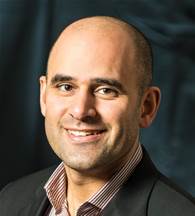
For example, the efficiency of hardware along with power management tools and data centre advisory services, as well as data centre design are all factors to help with energy reduction. AI can also be used within that design that help to minimise energy waste.
- Danny Elmarji, Vice President, APJC at Dell Technologies
Leong (Equinix): To support the advancement of our sustainability goals, we are actively testing and implementing new low-carbon fuels and energy sources.
For example, we are testing and implementing new low-carbon fuels, such as hydrotreated vegetable oils (HVOs), for backup power generation. Equinix fuel cell deployments are enabled to accept a blend of up to 50 percent hydrogen, allowing us to take advantage of the evolving hydrogen market.
We’ve also signed an agreement in 2024 to procure 500MW of nuclear energy from Oklo, a US-based company that designs and deploys advanced fission power plants.
Lee (CHINT): Whenever new data centres are being developed; they are under the spotlight as these huge power-hungry data centers consumes significant amount of power.
Energy efficiency and sustainability must also go hand in hand. Developers are exploring on-site renewables, microgrids, and energy storage systems to reduce dependence on traditional grids. Advanced digital twin simulations and AI-driven load forecasting are becoming essential tools in managing power usage.
Additionally, innovations in high-efficiency power transformers and modular substations are helping mitigate losses at scale.
Xu (ABI): Many major tech companies already have 100 percent renewable energy commitments.
AI-driven energy management systems are emerging to enable use cases such as cooling optimisation, workload distribution, and predictive maintenance.
For data centres specifically, there are cooling techniques like liquid and immersion cooling, Data centre infrastructure management (DCIM) solutions, and on-site renewable energy solutions, including solar panels and wind turbines alongside smart grids and microgrids for better energy management.
Teo (NTU): Businesses are exploring green hydrogen as a future clean energy source. Companies in Japan and South Korea are investing in hydrogen fuel technologies, which could eventually power industrial operations and data centres.
Companies adopt power purchase agreements for solar, wind, and hydropower, especially in markets like Indonesia and Vietnam. Companies in Singapore and Indonesia are adopting Battery Energy Storage Systems to stablise intermittent renewable energy sources and enhance grid resilience.

Microgrids powered by renewable energy and backed by battery storage enable organisations to become less reliant on traditional power grids. Organisations will want to adopt renewable energy sources if it is more reliable, cost effective (or when required) by government mandates.
- Jean Teo, Adjunct Associate Professor, Nanyang Business School at NTU
Wan (Delta): Power and sustainability are deeply connected. Our customers are adopting solar PV, microgrids, and hybrid energy systems. To facilitate, we offer renewable energy integration solutions and partner with Singapore’s telecom providers to drive efficiency in critical infrastructure.
The Battery Energy Storage Systems (BESS) allow businesses to store and optimise power, reducing reliance on the grid. Our new DPM Gen2 UPS features Silicon Carbide (SiC) IGBT technology to minimise switching and core losses.
At the same time, our EV charging, microgrid technologies, and energy-efficient automation solutions are enabling industries to seamlessly transition to a low-carbon future.
Lee (Senoko): Senoko has been actively rolling out initiatives to meet a clear demand from our customers who are looking to adopt the use of more sustainable sources of energy. We also incorporate green attributes into all our energy plans to make sustainable choices more accessible.
For example, Senoko has launched the SolarShare 2.0 platform, a peer-to-peer trading platform that enables businesses and households to buy and sell their solar energy at their preferred price. It allows businesses and households to track the source, time, and price of solar energy over the grid and measure and trace energy consumption every half hour.
KIM (Schneider):
Renewable energy, particularly solar technology, is a well-established solution in Singapore. Our survey shows that nearly three in five businesses plan to invest in these technologies.
- Yoon Young KIM, Cluster President, Singapore and Brunei at Schneider Electric
Given Singapore's limited natural resources, however, renewable energy cannot fully support national energy needs. Alternative sources of clean energy, such as nuclear energy, are being studied at a national level.
In the future, we expect that AI will help us monitor nuclear plants, detect potential problems and maybe even predict accidents – paving the way for safe nuclear power generation
Yam (Eaton): One way to lower energy use is by adopting more energy-efficient technologies. Our recent UPS is designed for power-intensive data center workloads.
We also announced a partnership with Red Dot Analytics to leverage AI-driven automation and predictive maintenance for effective data center energy management. Customers can gain insights into their energy usage patterns, enabling smarter energy decisions.
Renewable energy integration has also become more attractive as the cost of technologies such as lithium-ion batteries have fallen over the past decade, which helps to store energy and mitigate the intermittent nature of renewable energy sources.
As governments and organisations ramp up their sustainability progress, we can anticipate that such grid-interactive power management solutions will become a key part of the power infrastructure.
iTNews Asia: Elon Musk said at a recent Bosch conference that while the semiconductor shortage is behind us, the growing use of AI and Electric Vehicles is likely to lead the industry to the next crisis – a supply shortage in power and electrical equipment as soon as this year.
How real is this scenario to you? How challenging has it been for the industry or your organisation to cope with increasing power demands and to balance that with the constraints and shortages?
Teo (NTU): The scenario Musk described is possible as AI and EV adoption continue to surge. The growing electricity demand, combined with slow infrastructure development and grid capacity limitations, poses a real challenge.
In my previous role, where I was responsible for a manufacturing plant in China, the government-imposed changes to cope with increasing power demands in the city. However, since the grid was shared with other companies that refused to comply, our company was left stuck and had to bear government fines - despite the intention to comply - which was unfair to the company.
Lee (CHINT):

This concern over a supply shortage in power and electrical equipment is real. The demand for electrical infrastructure - transformers, switchgear, and power distribution units - has reached unprecedented levels, while supply chain disruptions and regulatory delays have constrained production capacity.
- Paul Lee, Director, APAC Strategic Segments at CHINT Global
Many utilities are struggling to expand grid connections fast enough to match the explosive growth in AI-driven data centers, electrification transitions like EV charging networks, and renewable power plants.
Leong (Equinix): To solve energy shortfalls and harness the full potential of AI, digital leaders, energy providers and policymakers must work together.
We’re advocating for governments to create policies that reflect the urgency of this challenge and inviting other data centre companies to join us in conversation about how and when next generation nuclear energy can be deployed.
The actions we take together to improve our digital infrastructure today will shape the landscape of opportunity, innovation and security for generations to come.
Yam (Eaton): We do not foresee this to be an immediate risk at the moment. Industries and businesses need to support the transition to a greener, low-carbon energy future.
Power grids will have to be transformed to facilitate the decentralisation of power. Technologies, including microgrids, advanced energy management systems, and IoT technologies, will help optimise energy use.
Pointon (STT GDC): The potential shortage of power infrastructure is a real concern for our sector. The time it takes to secure high-capacity power infrastructure is increasingly driving the pace of the sector.
While a hyperscale data centre project can be developed within 18 to 24 months if existing power sources are available, building new power infrastructure is a much longer process.

Building a new power infrastructure can often take several years, due to the need to enhance grid and substation capacities, the complexities of securing easements and navigating regulatory approvals, compounded by supply chain challenges for essential equipment such as transformers.
- Daniel Pointon, Group Chief Technology Officer at ST Telemedia Global Data Centres
KIM (Schneider): As power demands increase, we believe businesses and governments should focus on accelerating grid modernisation, investing to enhance energy efficiency, and building out decentralised energy solutions. Investing in smart grids, microgrids, and energy storage systems can help ease pressure on infrastructure while improving resilience.
Of course, these technologies also rely on semiconductors; and as we saw during the Covid-19 pandemic, disruptions are difficult to predict. Under such circumstances, collaboration between governments, utilities and technology providers will be crucial to addressing bottlenecks and expanding capacity.
Companies, meanwhile, should make plans to ensure the sustainability and resilience of their energy infrastructure, regardless of what threats they may or may not see on the horizon.
Elmarji (Dell): Modernising infrastructure can deliver greater energy efficiency. Technology leaders can look in three areas: firstly, is technology being optimised? Can they drop the old and inefficient infrastructure? Right-sizing AI models is crucial, as many organisations only need domain-specific implementations rather than large, energy-intensive general-purpose models.
Secondly, is it being modernised for energy efficiency? Advanced cooling technologies for servers, such as direct-to-chip and rack-level liquid cooling, not only reduce power usage but also maximise performance per watt, enabling efficient AI workload processing.
Thirdly, is to look at how overall hardware can be consolidated. Customers can consolidate up to seven old servers into one, saving up to 65 per cent lower CPU energy cost.
Chan (ABI):
From an organisational perspective, increasing energy usage leads to higher operating costs, which in turn impacts their bottom line. As organisations try to minimise energy consumption by introducing new operational guidelines and workplace cultures, we must remember that change typically takes time to implement.
- Benjamin Chan, Research Analyst, SEA Digital Transformation and AI Implementation at ABI Research
From the supply perspective, energy shortage is a large concern for enterprises as well as power outages can cause operational downtime. Energy supply constraints also limit the expansion plans and/or production capacity of organizations.
Lee (Senoko): Singapore has long faced energy constraints due to the country’s lack of natural resources and land for large-scale renewable energy. This is not a new challenge, and the Singapore Government has taken a long-term, proactive approach to energy security through diversification, regional collaboration, and infrastructure planning.
Senoko Energy is working with the government and fellow power generation companies to anticipate and manage evolving energy demands. Our projects, such as the (earlier mentioned) SolarShare 2.0 is helping to integrate more renewables into Singapore's energy mix. We are also collaborating with Gentari to explore hydrogen imports from Malaysia to Singapore.
Wan (Delta): The rapid expansion of AI workloads and EV adoption is indeed driving unprecedented demand for power infrastructure. This surge is straining the grid, leading to longer lead times for critical electrical components and increasing challenges in securing reliable power supply.
Companies must turn to innovative solutions to navigate these constraints effectively. This is where advancements in modular power, smart grid management, and localised production come into play.
iTNews Asia: How crucial is government support in managing power consumption? Have existing policies helped your organisation? How important is collaboration (with government and ecosystem players) to address shortages and meet future energy needs?
KIM (Schneider): Government initiatives and funding are essential for reducing energy consumption. Singapore Prime Minister Lawrence Wong recently announced in the budget a crucial top-up of the Future Energy Fund, highlighting the importance of forward planning and investment in emerging energy efficiency and decarbonisation technologies.
Equally important are strategic partnerships between the public and private sectors. Collaborating with like-minded partners will be key to addressing challenges such as skills and technology transfer, as well as overcoming limitations in existing energy infrastructure.
Wan (Delta):
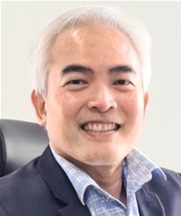
Government policies and regulations play a critical role. While countries such as Singapore, Thailand, and Malaysia have introduced green energy mandates and incentives for clean energy adoption, others face hurdles such as slow permitting processes, infrastructure constraints, and high investment costs that delay industrial power availability.
- Jimmy Wan, Country Manager at Delta Electronics Singapore
To drive progress, governments should work with private sector players to develop tailored strategies addressing each country’s unique energy challenges.
Elmarji (Dell): Improving energy usage is a solution that the technology ecosystem can collaborate on. For example, being able to advance understanding of issues and solutions through training and learning, and being able to calculate possible usage.
Adopting an ecosystem approach to reducing power and energy allows us to tap into the different strengths and collective expertise of different industry players and the government to overcome supply chain issues, develop critical infrastructure, and foster innovation that supports long-term energy strategies.
Teo (NTU): Government policies, regulations and initiatives help set the framework for businesses to operate within and can drive innovation, investment, and collaboration in the energy sector.
In Singapore, the government has set clear energy efficiency standards for industries. This includes the Building and Construction Authority (BCA) enforcing Green Mark Certification, which encourages businesses to adopt sustainable building practices.
Green Plan 2030 aims to make solar power a key contributor to the country's energy mix and incentivises businesses with tax credits for green technologies and energy efficiency updates.
Similarly, the Carbon Tax and Green Finance Initiatives. Whilst the Singapore government’s carbon tax is a positive step toward sustainability, it does place a heavy burden on companies. This is one of the factors that contributed to Shell’s decision to sell its Bukom Energy and Chemical Park in Singapore.
A smaller country like Singapore can benefit from aligning with standard global policies rather than taking the lead and imposing additional tax burdens on industries.
Yam (Eaton):
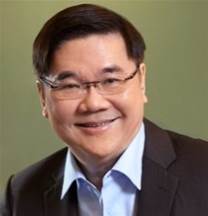
The government plays a key role. For example, countries like Singapore and the Netherlands previously implemented moratoriums to properly evaluate the impact of data center growth before establishing guidelines for sustainable growth.
- Jimmy Yam, Vice President & General Manager (East Asia) at Eaton Electrical
However, it would be impossible for the government to regulate every aspect of energy use. Platforms for organisations to share best practices and advice on how to effectively incorporate sustainability can drive collective action.
Eaton, for example, is supporting Singapore’s Sustainable Tropical Data Center Testbed, which brings together industry stakeholders to accelerate the development of tropical data center cooling solutions.
Pointon (STT GDC): Effective policies must strike a balance between supporting digital infrastructure growth, enabling access to renewable energy, and promoting energy efficiency.
In Singapore, the Green Data Centre Roadmap provides a compelling example of long-term policy planning. The framework gives the confidence to invest in energy-efficient technologies and renewable energy sourcing, aligning with sustainability goals.
Similarly, in the Philippines, amendments to the Renewable Energy Act have opened up opportunities for foreign investment in renewable energy projects, while Indonesia is offering fiscal incentives for low-carbon investments.
Collaboration across the entire ecosystem is essential. A close coordination on energy policies is also important, as consistent frameworks can create economies of scale for clean energy development and support both digital infrastructure growth and environmental responsibility across our regional footprint. A case in point is the long-held dream of an ASEAN-wide power grid, which the sector continues to support as a viable long-term solution to enhance energy security and efficiency.
Xu (ABI):

Countries and governments have a critical role to play in reducing power and energy consumption by enacting policies that incentivise energy efficiency and renewable energy adoption.
- Victor Xu, Technology Analyst at ABI Research
For example, in Singapore, the government has implemented a carbon tax and would be mandating a 10 percent energy reduction for large buildings (gross floor area of 5,000 square meters or more) under the Mandatory Energy Improvement (MEI) regime, demonstrating a commitment to these goals.
Private-public collaboration between government and ecosystem players is crucial and governments need to invest appropriately into the right green technologies to ensure sustainable growth.
Lee (Senoko): In Singapore, public-private collaboration is essential for grid resilience. The Singapore Government’s goal to import 6GW of low-carbon electricity by 2035 is shaping a more diversified and resilient power system. At the same time, reducing energy consumption is critical. Businesses and consumers can help by adopting energy-efficient technologies, shifting usage to off-peak hours, and integrating renewables like solar power.
Regional collaboration is also becoming increasingly critical to meet Singapore’s future power demand. Cross-border energy trade, regional power grids, and low-carbon imports will enhance energy security and ensure a stable, resilient and sustainable energy future.
Lee (CHINT): Government policies play a crucial role in balancing energy growth with sustainability. In Singapore, proactive initiatives such as the Energy Reset under the Green Plan 2030 and efforts to diversify energy sources, including regional power imports, have positioned the country as a leader in energy resilience.
However, as data centre demand rises, policies restricting new capacity due to land and energy constraints highlight the need for innovative solutions, such as advanced cooling technologies and energy-efficient infrastructure. Across the broader APAC region, regulatory frameworks vary, with some markets facing challenges in grid expansion and permitting delays.
Strengthening collaboration between governments, utilities, and industry stakeholders will be essential to ensuring energy security while supporting continued digital transformation. A flexible and forward-thinking regulatory approach will be key to aligning infrastructure development with future power needs.

